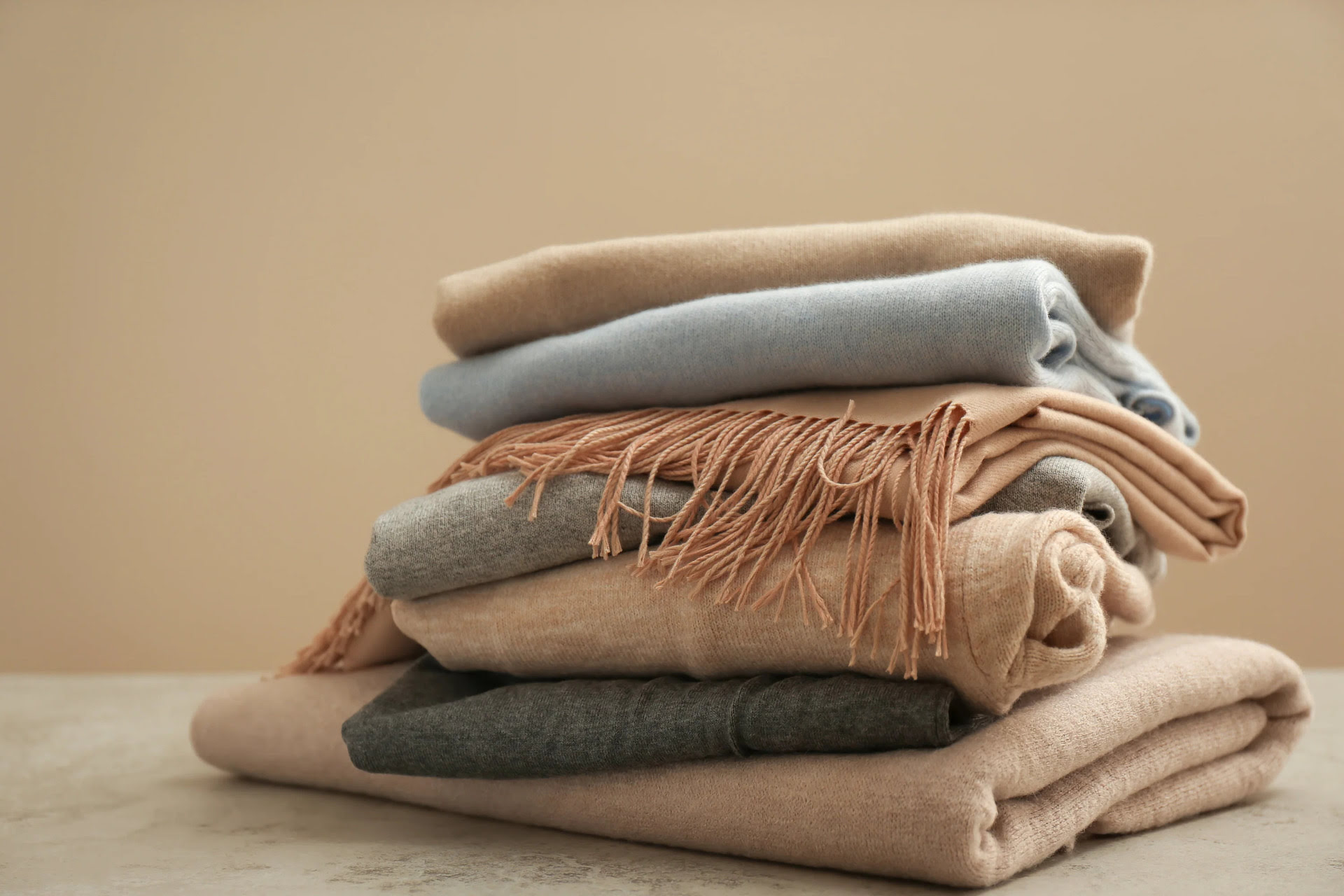

Articles
How To Store Cashmere Sweaters
Modified: September 1, 2024
Looking for articles on how to store cashmere sweaters? Discover the best tips and techniques to keep your cashmere in pristine condition for years to come.
(Many of the links in this article redirect to a specific reviewed product. Your purchase of these products through affiliate links helps to generate commission for Storables.com, at no extra cost. Learn more)
Introduction
Cashmere sweaters are prized for their luxurious softness and warmth. Made from the fine fibers of the cashmere goat, these sweaters require special care to ensure their longevity and maintain their superior quality. One of the key aspects of proper care for cashmere sweaters is storing them correctly when they are not being worn.
Improper storage can lead to stretching, pilling, and even damage from moths. To keep your cashmere sweaters in pristine condition and ready to wear season after season, it’s essential to follow the right storage techniques.
In this article, we will explore the reasons why storing cashmere sweaters properly is important and provide you with valuable tips on how to store them to maintain their quality and durability. Whether you have a few cashmere sweaters or an extensive collection, these tips will help you preserve your investment and enjoy your cashmere sweaters for years to come.
Key Takeaways:
- Properly storing cashmere sweaters is crucial for maintaining their softness and shape, preventing damage from pests and moisture. Follow cleaning, folding, and organizing tips to ensure longevity and quality.
- Consider the specific storage needs of your cashmere sweaters, choose the right storage container, and ensure proper ventilation and air circulation. Regularly monitor and refresh your stored sweaters for long-term preservation.
Read more: How To Store Sweaters In A Drawer
Why Store Cashmere Sweaters Properly
Properly storing cashmere sweaters is essential for several reasons. Firstly, cashmere fibers are delicate and can be easily damaged if not stored correctly. Storing them in a haphazard manner can lead to stretching, pilling, and even the development of holes in the fabric.
Secondly, cashmere sweaters are a significant investment, and you want to get the most out of your purchase. By storing them properly, you can extend their lifespan and ensure that they remain in excellent condition for years.
Finally, cashmere sweaters are vulnerable to damage from moths and other pests. Moths are attracted to natural fibers such as cashmere, and their larvae can cause significant damage to your cherished sweaters. Storing your cashmere sweaters properly helps to deter moths and prevent the costly damage that they can cause.
By understanding the importance of proper storage, you can take the necessary steps to ensure the longevity and quality of your cashmere sweaters.
Tips for Storing Cashmere Sweaters
When it comes to storing cashmere sweaters, there are several key tips to keep in mind. By following these guidelines, you can protect your sweaters from damage and maintain their softness and beauty:
- Clean your sweaters: Before storing your cashmere sweaters, make sure they are clean. Follow the care instructions on the label and either hand wash or dry clean them. This will remove any dirt, oils, or stains that could attract pests and cause fabric damage during storage.
- Fold, don’t hang: Avoid hanging your cashmere sweaters, as this can cause them to stretch out of shape. Instead, fold them neatly to maintain their original form. Avoid creasing the sweaters by using acid-free tissue paper or cotton muslin to cushion and protect the fabric.
- Choose a breathable storage container: Opt for breathable storage containers, such as fabric storage bags or boxes with ventilation holes. This allows air to circulate and prevents moisture build-up, which can cause mildew or musty odors.
- Avoid plastic bags: Plastic bags can trap moisture and promote the growth of mildew and mold. It is best to avoid storing cashmere sweaters in plastic bags, especially for long periods.
- Use moth deterrents: To protect your cashmere sweaters from moth damage, add moth deterrents such as cedar balls, lavender sachets, or moth repellent to the storage space. Moths are repelled by the scents of these natural deterrents, helping to keep your sweaters safe.
- Store in a cool, dry place: Choose a storage space that is cool, dry, and away from direct sunlight. High temperatures and humidity can cause the fibers to weaken and promote the growth of mold or mildew.
- Avoid storing in airtight containers: Airtight containers can trap moisture and lead to fabric damage. It is best to use containers that allow some airflow to prevent any moisture build-up.
- Rotate your sweaters: To prevent excess pressure on specific areas, rotate the positioning of your cashmere sweaters every few months. This will help maintain their shape and prevent stretching or distortion in one spot.
- Check periodically: Even with proper storage, it’s essential to check on your sweaters occasionally. Look for signs of moth activity, inspect the fabric for any stains or damage, and make sure the storage space is clean and dry.
By following these tips, you can ensure that your cashmere sweaters remain in excellent condition throughout their time in storage. Proper storage practices will help preserve the softness, integrity, and beauty of your cashmere garments, making them ready to wear whenever you desire.
Cleaning Cashmere Sweaters before Storage
Before storing your cashmere sweaters, it is crucial to ensure that they are clean. Cleaning them before storage helps to remove any dirt, oils, or stains that could attract pests or cause fabric damage over time. Here are some guidelines for cleaning cashmere sweaters before storing them:
- Read the care instructions: Always start by checking the care instructions on the label of your cashmere sweater. Different sweaters may have different cleaning requirements, so it’s important to follow the manufacturer’s recommendations.
- Hand wash or dry clean: Most cashmere sweaters can be either hand washed or dry cleaned. If the care instructions permit hand washing, fill a clean sink or basin with lukewarm water and add a gentle wool or cashmere detergent. Gently agitate the sweater in the water and then rinse thoroughly with cool water.
- Be gentle: When washing cashmere sweaters, avoid excessive rubbing or twisting, as this can cause the fibers to stretch or lose their shape. Instead, gently squeeze out the excess water and lay the sweater flat on a clean towel to remove additional moisture.
- Avoid harsh chemicals: When selecting a detergent, opt for a gentle, non-alkaline option specifically designed for wool or cashmere. Avoid using bleach, fabric softener, or any harsh chemicals that can damage the delicate fibers.
- Dry flat: After washing, reshape the sweater to its original dimensions and lay it flat on a clean, dry towel. Avoid hanging the sweater or wringing out the water, as this can cause stretching or distortion of the fabric. Allow the sweater to air dry naturally, away from direct sunlight or heat sources.
- Steam to remove wrinkles: If your cashmere sweater has wrinkles after drying, you can use a garment steamer to gently remove them. Hold the steamer a few inches away from the fabric and steam lightly, being careful not to saturate the sweater with too much steam.
- Store only when completely dry: It is essential to store cashmere sweaters only when they are completely dry. Any moisture left in the fibers can lead to mildew or musty odors, which can be difficult to remove later on.
By cleaning your cashmere sweaters before storage, you remove any potential contaminants that could attract pests or cause damage. Following these cleaning guidelines will help maintain the integrity and appearance of your cashmere sweaters, ensuring they are ready to wear when the time comes.
Folding and Organizing Cashmere Sweaters
Properly folding and organizing cashmere sweaters is essential to maintain their shape, prevent wrinkles, and maximize storage space. Here are some tips to help you fold and organize your cashmere sweaters effectively:
- Start with a clean, flat surface: Begin by working on a clean, flat surface, such as a bed or a table. This will provide you with enough space to fold your sweaters without any obstructions.
- Smooth out any wrinkles: Before folding, ensure that your cashmere sweater is free from wrinkles. Gently smooth out any creases or folds in the fabric to achieve a neat and wrinkle-free result.
- Lay the sweater flat: Lay the cashmere sweater flat on the surface, with the front side facing down. Smooth out any wrinkles once again, ensuring that the entire sweater is spread out evenly.
- Start folding: Fold one side of the sweater towards the center, aligning the side seam with the shoulder seam. Repeat this step with the other side, bringing it towards the center as well. The sleeves should be neatly folded along the sides of the sweater.
- Fold in half: Fold the bottom hem of the sweater up towards the neckline, creating a neat fold at approximately the halfway point. The sweater should now be folded in half, with the front side facing out.
- Avoid excessive creasing: While folding, be mindful of any excessive creases that may form. Smooth out the fabric as you go along to prevent deep creases or permanent lines from developing.
- Stack or store vertically: Once folded, you can stack your cashmere sweaters on top of each other, or you can store them vertically in a drawer or on a shelf. Stacking them vertically allows for easy visibility and access to your sweaters without disturbing the entire stack.
- Consider using dividers or organizers: To further enhance organization and prevent sweaters from toppling over, consider using dividers or fabric organizers within your storage space. This will keep the sweaters neatly separated and make it easier to retrieve a specific sweater without disrupting the rest.
- Group by weight or color: If you have a large collection of cashmere sweaters, you may want to consider grouping them by weight or color. This way, you can easily locate the desired sweater based on the occasion or your personal preference.
By following these folding and organizing tips, you can keep your cashmere sweaters in pristine condition and make the most out of the available storage space. Proper organization not only helps in maintaining the shape and integrity of the sweaters but also allows for easy access and selection when you want to wear them.
Read more: How To Store Cardigan Sweaters
Choosing the Right Storage Container
When it comes to storing cashmere sweaters, the choice of storage container is just as important as the folding and organizing process. The right container will protect your sweaters from dust, pests, and moisture, ensuring that they remain in pristine condition. Here are some factors to consider when choosing the right storage container for your cashmere sweaters:
- Breathability: Opt for storage containers that are breathable, allowing air to circulate. Sweaters made of natural fibers like cashmere require proper airflow to prevent moisture buildup, which can lead to mildew or musty odors. Fabric storage bags made of cotton or linen are excellent options as they allow air to pass through while protecting your sweaters.
- Size: Choose a storage container that is appropriate in size to accommodate your cashmere sweaters without excessive compression or overcrowding. Sweaters should have enough space to lay flat or be folded without being tightly squeezed. This helps to prevent stretching or unwanted creasing.
- Protection from pests: Look for storage containers that provide some level of protection against pests, especially moths. Moths are attracted to natural fibers like cashmere and can cause significant damage. Consider using containers with built-in moth-repellent properties or add moth deterrents, such as cedar balls or lavender sachets, to the storage space.
- Durability: Choose storage containers that are durable and can withstand regular use. Reinforced seams, sturdy zippers, or snap closures are desirable features that ensure the container will hold up over time and offer better protection for your sweaters.
- Visibility: Opt for containers that allow for easy visibility of the contents. Transparent storage bags or clear plastic bins make it effortless to locate specific cashmere sweaters without having to rummage through multiple containers. This also helps to prevent unnecessary handling and potential damage to other sweaters.
- Stackability: If you have limited storage space, consider containers that are stackable. This allows you to maximize vertical space and keep your cashmere sweaters neatly organized. Ensure that the containers are designed to support stacking and have flat, stable lids that won’t cause compression or distortion of the sweaters.
- Climate control: In areas with high humidity or fluctuating temperatures, consider using storage containers that offer climate control features. These containers help regulate moisture levels and temperature, providing extra protection for your cashmere sweaters.
- Accessibility: Choose storage containers that provide easy access to your cashmere sweaters when you need them. Containers with top or side openings, as well as those with clear windows or labels for easy identification, make it convenient to retrieve a specific sweater without disrupting the order of the others.
By considering these factors when choosing the right storage container for your cashmere sweaters, you can ensure optimal protection and organization. The right container not only helps in preserving the quality of the sweaters but also makes it easier to locate and retrieve them when you want to wear them.
Adding Moth Deterrents to the Storage Space
Moths are a common concern when it comes to storing cashmere sweaters. These pests are attracted to natural fibers like cashmere, and their larvae can cause significant damage to your prized garments. To protect your cashmere sweaters from moth infestation, it is important to add moth deterrents to the storage space. Here are some effective moth deterrents you can use:
- Cedar balls or blocks: Cedar is a natural moth repellent with a pleasant scent. Place cedar balls or blocks in your storage containers or hang them in the closet where you store your cashmere sweaters. The aromatic oils in cedar repel moths and help deter them from laying eggs on your garments.
- Lavender sachets: Lavender is another natural moth deterrent with a calming fragrance. Place dried lavender sachets in your storage containers or hang them in your closet. Not only will this help repel moths, but it will also leave a pleasant scent on your cashmere sweaters.
- Moth repellent sachets or sprays: You can find moth repellent products specifically designed to protect clothing. These sachets or sprays contain chemicals that repel moths and prevent them from infesting your cashmere sweaters. Follow the instructions on the packaging to place the sachets or apply the spray in your storage space.
- Essential oils: Certain essential oils have moth-repellent properties. Mix a few drops of essential oil, such as lavender, cedarwood, or citronella, with water and spray it lightly in your storage containers or closet. The scent of these oils will help deter moths from your cashmere sweaters.
- Regular cleaning: Keeping your cashmere sweaters clean is also an effective way to discourage moths. Moths are attracted to body oils, food spills, or other residue on clothing, so regularly cleaning your sweaters before storage will help remove these attractants and reduce the chances of moth infestation.
- Monitor the storage space: Periodically check the storage space for signs of moth activity. Look for any flying moths or larvae, as well as any webbing or small holes in your sweaters. If you notice any signs of infestation, take immediate action to remove and treat the affected items.
By adding these moth deterrents to your storage space, you can create a hostile environment for moths and protect your cashmere sweaters from their destructive larvae. However, it’s important to note that moth deterrents may not guarantee complete prevention, so staying vigilant and regularly monitoring your stored sweaters is still necessary.
Store cashmere sweaters by folding them and placing them in a breathable storage bag or drawer. Avoid hanging them, as this can cause stretching and distortion of the fabric. Keep them away from direct sunlight and moisture to prevent damage.
Ensuring Proper Ventilation and Air Circulation
Proper ventilation and air circulation are crucial for maintaining the quality and condition of your cashmere sweaters during storage. Adequate airflow helps prevent moisture buildup, which can lead to mold, mildew, and musty odors. Here are some tips to ensure proper ventilation and air circulation in your storage space:
- Choose a breathable storage container: Opt for storage containers made of breathable materials, such as fabric or mesh. These containers allow air to circulate around your cashmere sweaters, preventing the accumulation of moisture and promoting ventilation.
- Use acid-free tissue paper or cotton muslin: To cushion and protect your cashmere sweaters, lay a sheet of acid-free tissue paper or cotton muslin between each folded sweater. These materials help absorb excess moisture and allow for better airflow.
- Avoid plastic bags or containers: Plastic bags or containers should be avoided as they can trap moisture and promote the growth of mold or mildew. If you need to use plastic for temporary storage, make sure to remove the sweaters from them as soon as possible and transfer them to breathable containers.
- Provide space between storage containers: If stacking or organizing multiple storage containers, leave some space between them. This allows air to circulate freely, preventing stagnant air that can lead to moisture buildup. Avoid tightly packing containers together, as it restricts airflow.
- Store in a well-ventilated area: Choose a storage space that is well-ventilated, such as a closet with air vents or a room with windows that can be opened for fresh air circulation. Good airflow helps prevent the accumulation of stale or damp air in the storage area.
- Avoid storing in humid or damp environments: High humidity or damp environments can lead to moisture-related damage to your cashmere sweaters. Avoid storing them in basements, attics, or areas prone to leaks or moisture problems. If necessary, use dehumidifiers or moisture absorbers to control humidity levels.
- Allow for periodic air circulation: If storing your cashmere sweaters in closed containers or bags for long periods, it is essential to periodically remove them and allow them to air out. Lay the sweaters flat on a clean surface in a well-ventilated area for a few hours to refresh the air inside and prevent any lingering moisture.
- Check for condensation: Regularly inspect your storage space for any signs of condensation or moisture. If you notice any, identify and address the source of the moisture, as it can lead to damage to your cashmere sweaters. Wipe away any excess moisture and ensure proper ventilation before returning the sweaters to storage.
By ensuring proper ventilation and air circulation in your storage space, you can minimize the risk of mold, mildew, and odors, helping to maintain the quality and freshness of your cashmere sweaters throughout their storage period. Good airflow is essential for preserving the delicate fibers and prolonging the lifespan of your cherished garments.
Storing Cashmere Sweaters in a Closet
Storing cashmere sweaters in a closet is a convenient and accessible option for many. With proper care and organization, you can ensure that your cashmere sweaters remain in excellent condition and are easily accessible whenever you want to wear them. Here are some tips for storing cashmere sweaters in a closet:
- Clean the closet: Before storing your sweaters, make sure the closet is clean and free from dust, dirt, and any potential contaminants. Wipe down the shelves or surfaces and vacuum the floor to remove any debris.
- Sort and declutter: Take the opportunity to declutter your closet and sort through your cashmere sweaters. Remove any sweaters that you no longer wear or ones that are in need of repair. This will help create more space and ensure that you are only storing sweaters in good condition.
- Use breathable storage containers: If you have limited space or want extra protection, you can use breathable storage containers such as fabric storage bags or containers with ventilation holes. These containers help keep your cashmere sweaters dust-free and protected while still allowing for proper ventilation and airflow.
- Fold your sweaters: Fold your cashmere sweaters following the proper folding technique mentioned earlier. Avoid hanging them, as this can lead to stretching and misshaping of the fabric. Neatly stack your folded sweaters on shelves or in storage containers to maximize space.
- Consider shelf dividers or organizers: Shelf dividers or organizers can help separate and categorize your cashmere sweaters, making it easier to find specific ones without disrupting the entire stack. They also provide support and prevent leaning or toppling of the sweaters.
- Rotate your sweaters: To prevent excessive pressure or stretching in one area, periodically rotate your stacked cashmere sweaters. This allows for equal distribution of weight and helps maintain the shape and integrity of the garments.
- Avoid overcrowding: Avoid cramming too many sweaters on a single shelf or in a small section of the closet. Overcrowding can lead to wrinkles, misshaping, and difficulty accessing individual sweaters. It is important to provide enough space for each sweater to ensure their proper care.
- Monitor temperature and humidity: Keep an eye on the temperature and humidity levels in your closet. Cashmere sweaters thrive in a cool and dry environment, so avoid storing them in closets with high humidity or extreme temperature fluctuations. Use a dehumidifier or moisture absorbers if necessary.
- Keep the closet ventilated: Ensure proper air circulation in the closet by keeping the doors slightly ajar or by using closet air vents. This allows for fresh air to circulate and helps prevent any stale or damp air from lingering, reducing the risk of mold or odors.
- Check periodically: Regularly check on your cashmere sweaters stored in the closet. Inspect for any signs of moth activity, mold, or damage. Take the opportunity to properly refold or rearrange the sweaters to prevent unnecessary creasing or pressure marks.
By following these tips, you can effectively store your cashmere sweaters in a closet, keeping them well-organized, protected, and easily accessible. A carefully maintained closet storage system ensures that your cashmere sweaters remain in pristine condition and ready to wear whenever you desire.
Read more: How To Store Sweaters Without Wrinkles
Storing Cashmere Sweaters in a Drawer
Storing cashmere sweaters in a drawer is an efficient and space-saving option that allows for easy access and organization. With proper techniques and attention to detail, you can ensure that your cashmere sweaters remain in excellent condition while neatly tucked away. Here are some tips for storing cashmere sweaters in a drawer:
- Prepare the drawer: Start by cleaning and decluttering the drawer you plan to use. Remove any items that may cause snagging or create excessive compression on your cashmere sweaters. Wipe down the inside of the drawer to eliminate any dust or debris.
- Fold your sweaters: Proper folding is key to storing cashmere sweaters in a drawer. Fold each sweater following the folding technique mentioned earlier, ensuring that they are neatly stacked and free from wrinkles or creases. Arrange them in the drawer with the desired order or organization.
- Use dividers or organizers: Consider using drawer dividers or fabric organizers to separate and categorize your cashmere sweaters. This helps keep the sweaters organized and prevents them from getting mixed up or becoming disheveled when you open and close the drawer.
- Avoid overcrowding: Avoid cramming too many sweaters into a single drawer, as it can lead to wrinkles, misshaping, and difficulty in retrieving a specific sweater. Allow enough space for each sweater to lay flat and maintain their shape while ensuring easy access.
- Rotate your sweaters: Similar to storing in a closet, periodically rotate your cashmere sweaters in the drawer. This ensures equal use and prevents excessive wear or pressure on particular garments. It also allows for better ventilation and prevents any lingering odors.
- Keep the drawer clean and dry: Ensure the drawer is kept clean and free from moisture. Regularly vacuum or wipe down the drawer to prevent dust or debris from accumulating. Avoid storing damp or wet items in the drawer to prevent any potential moisture damage to your cashmere sweaters.
- Check for moths and pests: Regularly inspect the drawer for any signs of moth activity or pest infestation. Look for webbing, larvae, or any other indications of pests. If necessary, use natural moth deterrents, such as cedar balls or lavender sachets, to protect your cashmere sweaters.
- Avoid direct sunlight: Direct sunlight can cause fading and discoloration of your cashmere sweaters. Place the drawer in a location away from direct sunlight to preserve the color and quality of the fabric.
- Monitor humidity: Cashmere sweaters thrive in a cool and dry environment. Keep an eye on the humidity levels in the storage area and consider using moisture absorbers if necessary to prevent excess moisture and humidity from affecting your sweaters.
- Check periodically: Regularly check on your cashmere sweaters stored in the drawer. Inspect for any signs of damage, mold, or odors. Refold or rearrange the sweaters as needed to prevent any unnecessary creasing or pressure marks.
By following these tips, you can effectively store your cashmere sweaters in a drawer, keeping them neatly organized, protected, and easily accessible. With proper care and attention, your cashmere sweaters will remain in pristine condition and ready to wear whenever you desire.
Storing Cashmere Sweaters in Vacuum Sealed Bags
Using vacuum-sealed bags can be a space-saving and effective method for storing cashmere sweaters. The bags remove excess air and create a compact storage solution that helps protect your sweaters from dust, pests, and moisture. Here are some tips for storing cashmere sweaters in vacuum-sealed bags:
- Clean and dry your sweaters: Before storing your cashmere sweaters, ensure they are clean and thoroughly dry. Any dirt, oils, or moisture left on the sweaters can lead to stains, odors, or even mold growth during storage.
- Fold your sweaters: Proper folding is essential for maximizing storage space and preserving the shape of your cashmere sweaters. Fold each sweater neatly, following the folding technique mentioned earlier. Smooth out any wrinkles or creases to ensure a flat and even fold.
- Group sweaters by type or color: If you have multiple cashmere sweaters, consider grouping them by type or color before placing them in the vacuum-sealed bags. This will make it easier to find a specific sweater without having to open multiple bags.
- Place sweaters in individual bags: To prevent any potential friction or damage, place each folded sweater in its own vacuum-sealed bag. This ensures that each sweater remains separate and well-protected during storage. Make sure to leave enough space in each bag to accommodate the sweater without excessive compression.
- Remove excess air: Follow the instructions provided with the vacuum-sealed bags to remove excess air from the bags. Most vacuum-sealed bags require a vacuum cleaner or a handheld pump. Squeeze out as much air as possible to create a compact and tightly sealed package.
- Avoid over-compression: While removing air is essential, it is important to strike a balance and avoid excessive compression. Over-compression can cause unwanted creases or distortion in the fabric. Aim to create a snug fit without applying excessive pressure on the cashmere sweaters.
- Store in a cool and dry place: Choose a storage location that is cool, dry, and away from direct sunlight. Excessive heat or humidity can damage the delicate cashmere fibers. Find a suitable space, such as a closet or a drawer, where the vacuum-sealed bags can remain undisturbed.
- Monitor for moisture or pests: While vacuum-sealed bags provide protection, it is important to periodically check for any signs of moisture buildup or pest infestation. If any issues are detected, remove the sweaters from the bags, address the problem, and ensure the sweaters are completely dry before returning them to storage.
- Label and document: To make it easier to locate specific cashmere sweaters, consider labeling the vacuum-sealed bags or keeping an inventory list. This way, you can quickly identify the contents of each bag without having to open them all.
- Check periodically: Regularly inspect your vacuum-sealed bags and cashmere sweaters. Check for any signs of damage, mold, or odors. Refold or rearrange the sweaters if necessary to prevent any unnecessary creasing or pressure marks.
By following these tips, you can effectively store your cashmere sweaters in vacuum-sealed bags, maximizing space and ensuring their protection. However, keep in mind that cashmere is a delicate fabric, so it’s important to balance the convenience of vacuum-sealed bags with proper care to maintain the quality of your sweaters.
Storing Cashmere Sweaters in a Garment Bag
Using a garment bag is an excellent option for storing cashmere sweaters, providing protection from dust, pests, and potential damage. Garment bags are designed to accommodate hanging clothing, making them a convenient and space-saving option. Here are some tips for storing cashmere sweaters in a garment bag:
- Clean your sweaters: Before storing your cashmere sweaters, ensure they are clean and free from any dirt, oils, or stains. Follow the care instructions on the label and either hand wash or dry clean the sweaters, allowing them to fully dry before storing.
- Fold or hang: Cashmere sweaters can be either folded or hung, depending on personal preference and available space. If you choose to hang your sweaters, make sure to use padded or nonslip hangers to prevent stretching or distortion of the fabric. Avoid using wire hangers that can leave marks or cause damage.
- Place each sweater in an individual bag: To protect your cashmere sweaters from dust or potential snagging, place each sweater in its own garment bag. This will help keep each sweater separate and well-protected while allowing for ventilation and ease of access.
- Leave space between garments: When hanging multiple cashmere sweaters in a garment bag, make sure to leave enough space between each garment. Overcrowding can lead to wrinkles, creases, or potential damage. Providing space ensures proper airflow and prevents garments from rubbing against each other.
- Zip up the garment bag: Once all the cashmere sweaters are placed in the garment bag, zip it up completely to seal and protect the contents. Make sure the zipper is securely closed to prevent dust or pests from entering the bag.
- Select a suitable storage location: Choose a storage area that is cool, dry, and away from direct sunlight. Extreme heat or humidity can damage cashmere fibers. Consider a closet or an area with adequate ventilation to maintain the quality of your sweaters.
- Monitor for pests and moisture: Regularly check for any signs of pests or moisture in the storage area. Inspect the garment bag and sweaters for any insects, webbing, or moisture accumulation. Address any issues immediately to prevent damage to your cashmere sweaters.
- Rotate your sweaters: To prevent any pressure marks or uneven stretching, regularly rotate the position of your cashmere sweaters within the garment bag. This ensures equal use and helps maintain the shape and integrity of the garments.
- Check periodically: Take the time to inspect your cashmere sweaters stored in the garment bag. Look for any signs of damage, mold, or moths. Remove the sweaters from the bag if necessary, and refold or rearrange them to prevent any unnecessary creases or pressure marks.
- Avoid storing in plastic: While plastic garment bags may seem convenient, they can trap moisture and lead to mold or mildew growth. It is best to choose garment bags made of breathable materials that allow for proper airflow.
By following these tips, you can ensure that your cashmere sweaters are efficiently stored and well-protected in a garment bag. Proper care and attention will help maintain the quality and longevity of your cashmere garments, so they are ready to wear whenever you desire.
Additional Tips for Long-Term Storage
When storing cashmere sweaters for an extended period, it is essential to take extra precautions to ensure their long-term preservation. Here are some additional tips to keep in mind for long-term storage:
- Climate-controlled storage: Consider storing your cashmere sweaters in a climate-controlled storage area. Extreme temperature and humidity fluctuations can damage the delicate cashmere fibers. Climate-controlled storage helps maintain stable conditions, preventing mold, mildew, and fabric deterioration.
- Pest control: Implement effective pest control measures to protect your cashmere sweaters from moths, beetles, or other fabric-damaging pests. Regularly inspect and clean the storage area, use moth repellents or natural deterrents, and monitor for any signs of pest activity.
- Periodically clean and refresh: While in long-term storage, cashmere sweaters may benefit from periodic cleaning and refreshing. Schedule routine inspections and consider professional cleaning or airing out the sweaters to maintain their freshness and prevent any odors or fabric damage.
- Avoid using scented products: While natural moth deterrents like cedar or lavender are effective, avoid using scented products directly on your cashmere sweaters as they may leave behind unwanted scents or oils. Use these products in the storage space instead.
- Avoid heavy items on top: If storing your cashmere sweaters in stacked containers or drawers, avoid placing heavy items on top. Excessive weight can cause compression, wrinkles, or stress on the garments. Keep the sweaters in a separate container or ensure they are at the top of the stack to minimize any potential damage.
- Rotate storage location: If possible, consider rotating the storage location of your cashmere sweaters every couple of years. This allows for equal exposure to the storage environment and helps prevent any long-term fabric damage that may occur in a specific area.
- Document and label: Create an inventory list or take photos of the cashmere sweaters you have stored for long term. This helps keep track of what you have and where it is stored, making it easier to locate specific items without having to search through all your stored garments.
- Continue monitoring: Even in long-term storage, it is important to periodically check on your cashmere sweaters. Inspect for any signs of damage, pests, or moisture. Refold or rearrange the sweaters if necessary to prevent any unnecessary creases or pressure marks.
- Consider professional storage: If you have a valuable or extensive cashmere collection, it may be worth considering professional storage options. Professional storage facilities often offer climate-controlled environments, proper storage techniques, and additional security measures to ensure the long-term preservation of your garments.
- Follow manufacturer’s instructions: Always refer to the manufacturer’s instructions for storage recommendations specific to your cashmere sweaters. Different brands or materials may have unique care requirements, and following these guidelines will help preserve the quality and integrity of your garments.
By implementing these additional tips for long-term storage, you can have peace of mind knowing that your cashmere sweaters are protected, well-maintained, and ready to be enjoyed when you retrieve them from storage.
Read more: How To Store Sweaters In A Small Closet
Conclusion
Properly storing cashmere sweaters is essential to maintain their softness, shape, and overall quality. By following the tips outlined in this article, you can ensure that your cashmere sweaters are protected from damage, pests, and moisture, and remain in excellent condition for years to come.
Begin by cleaning your sweaters according to the care instructions, whether through hand washing or dry cleaning. Folding them neatly and organizing them in breathable storage containers, such as fabric bags or boxes, helps maintain their shape while allowing for proper air circulation. Adding moth deterrents like cedar balls or lavender sachets can help prevent damage from pests like moths.
Choosing the right storage container, such as a garment bag or a drawer, provides further protection while maximizing available space. Consider the specific needs of your cashmere sweaters and the storage conditions in your home when selecting the most suitable option.
Additionally, ensure proper ventilation and air circulation in your storage space by selecting breathable containers and monitoring humidity levels. Regularly check for signs of moisture or pests and take immediate action if necessary.
Moreover, consider the specific storage method that suits your needs for short-term or long-term storage. Whether it’s in a closet, drawer, vacuum-sealed bag, or garment bag, each method has its advantages and considerations, so choose the one that best suits your preferences and available space.
Remember to periodically inspect and refresh your stored cashmere sweaters, avoiding heavy items on top and rotating their storage location if possible. Consider professional storage options for valuable or extensive collections.
In conclusion, by following the proper techniques and maintaining regular care and monitoring, you can enjoy your cashmere sweaters for many seasons to come. The investment in storing your cashmere sweaters properly will pay off in the long run, as they will continue to provide warmth, comfort, and timeless style whenever you wear them.
Frequently Asked Questions about How To Store Cashmere Sweaters
Was this page helpful?
At Storables.com, we guarantee accurate and reliable information. Our content, validated by Expert Board Contributors, is crafted following stringent Editorial Policies. We're committed to providing you with well-researched, expert-backed insights for all your informational needs.

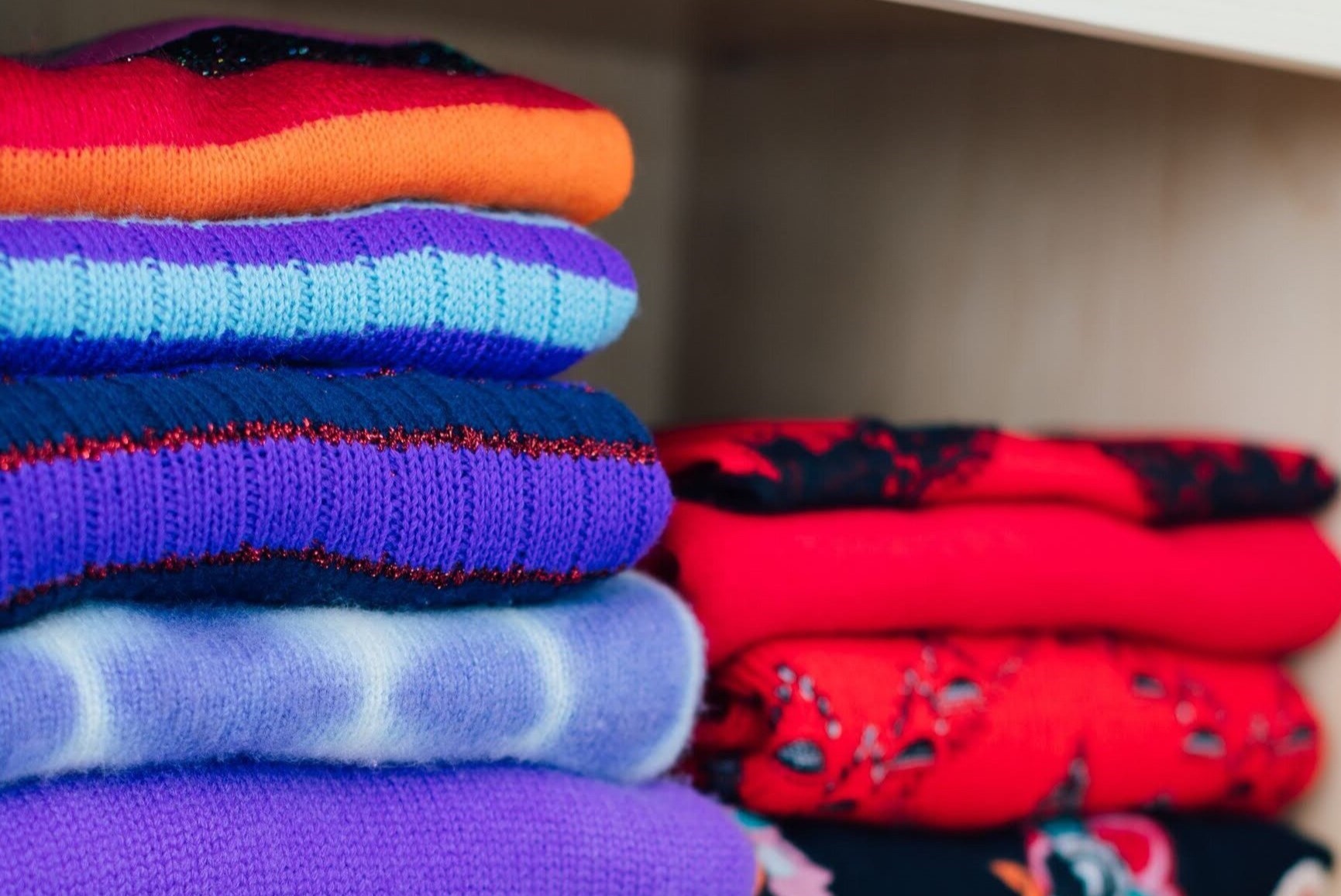
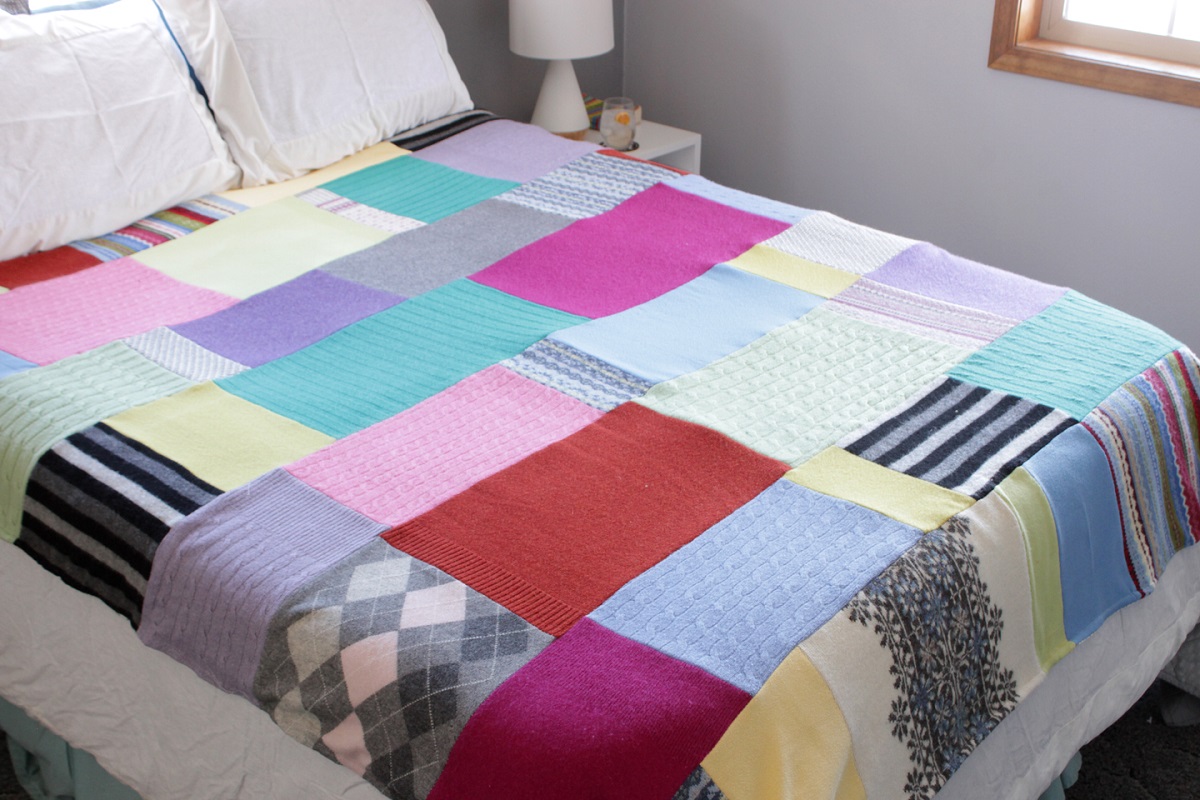

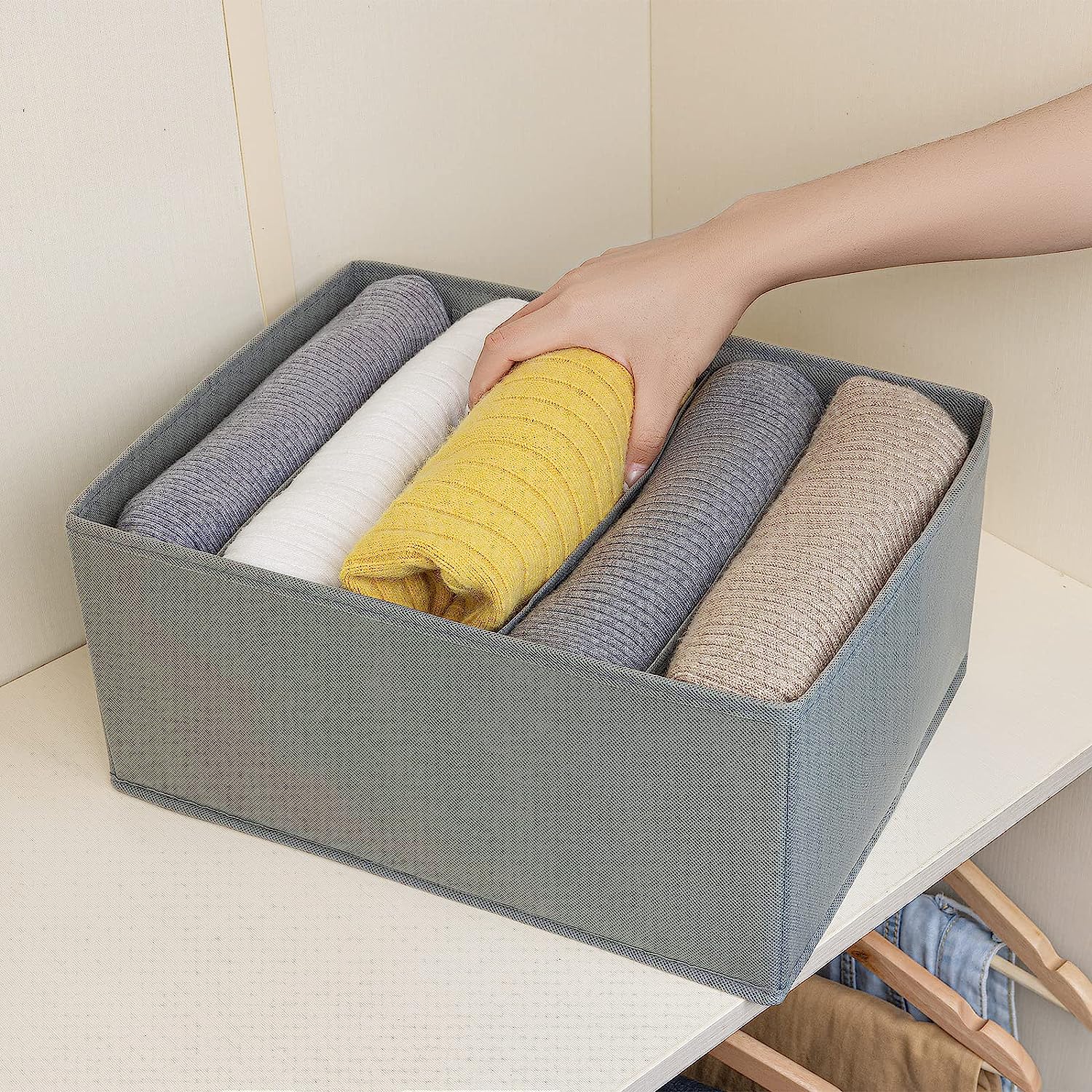



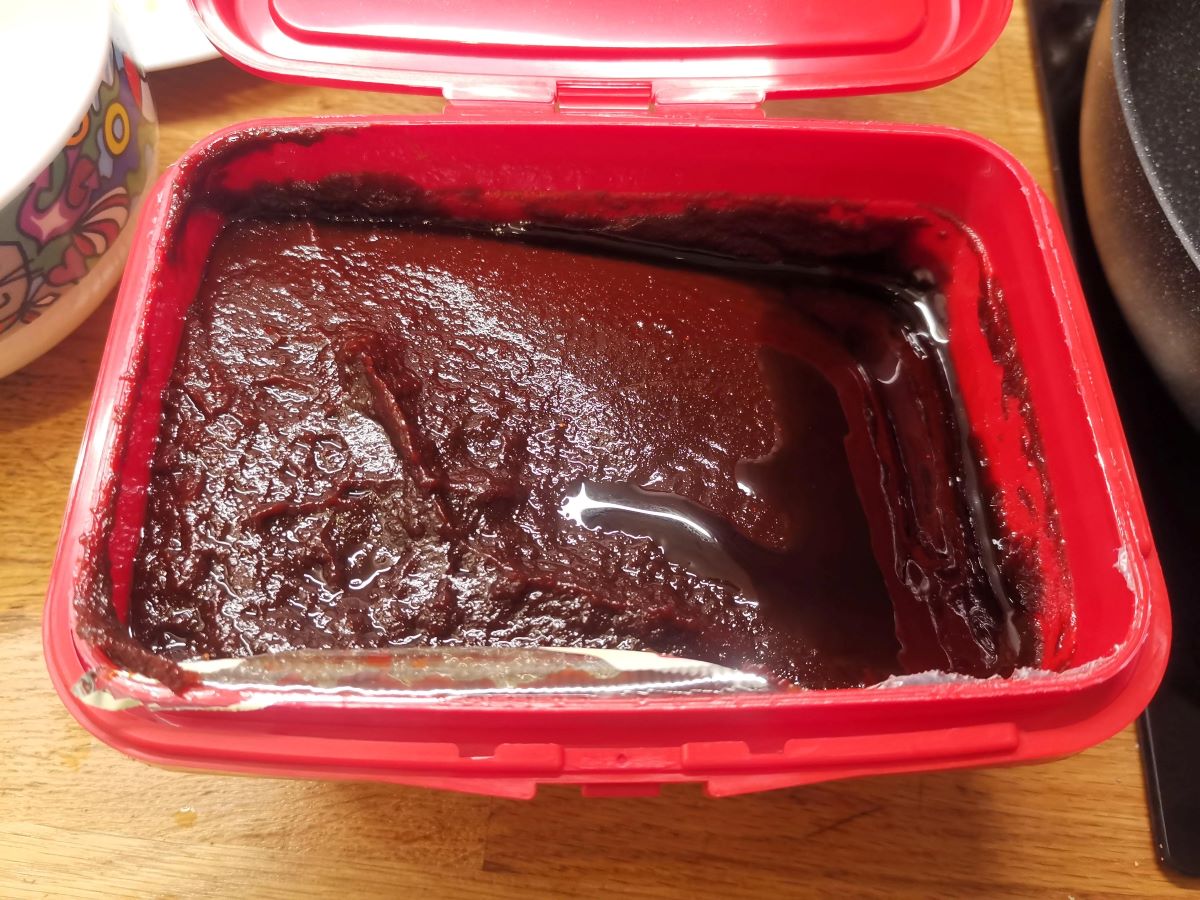
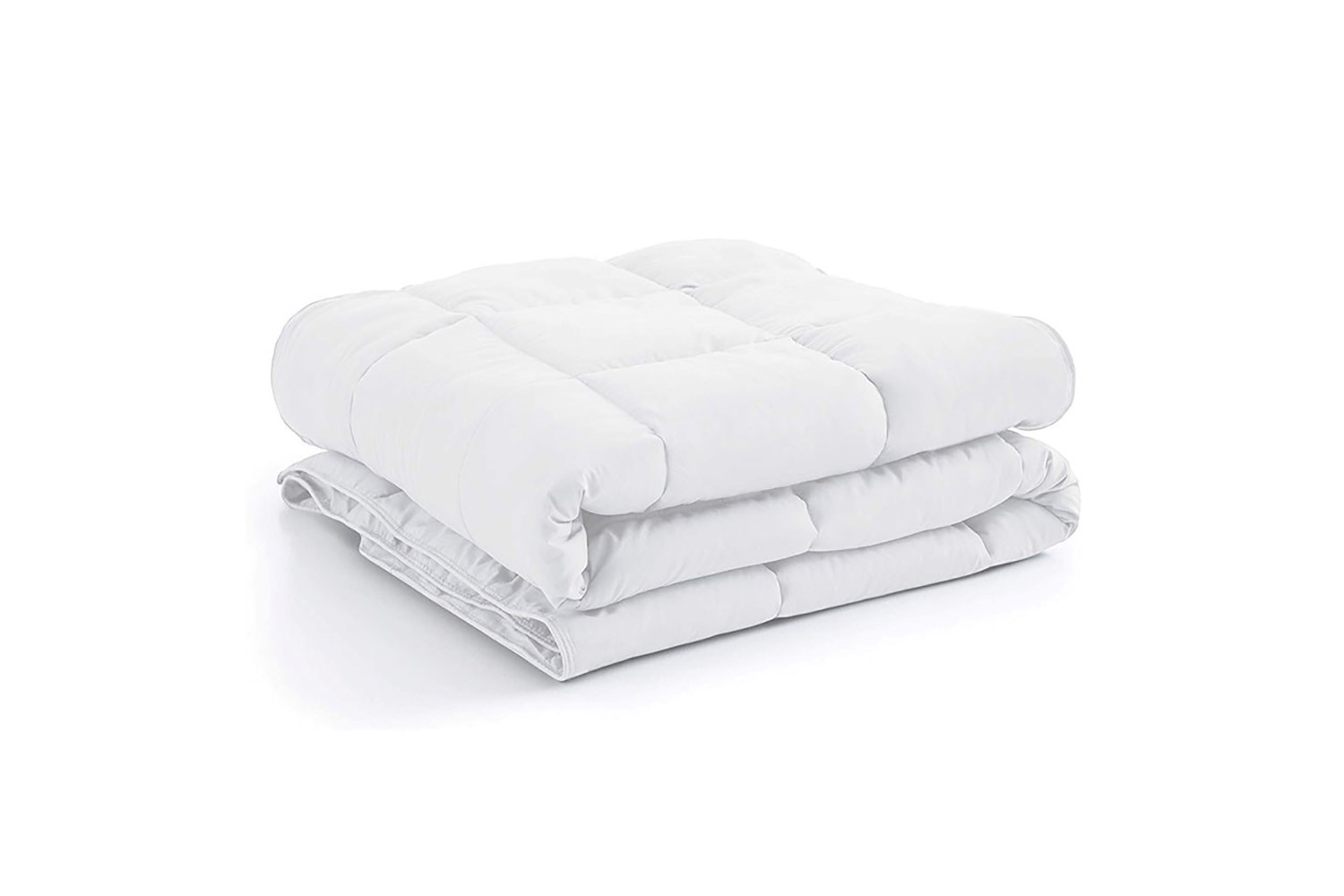
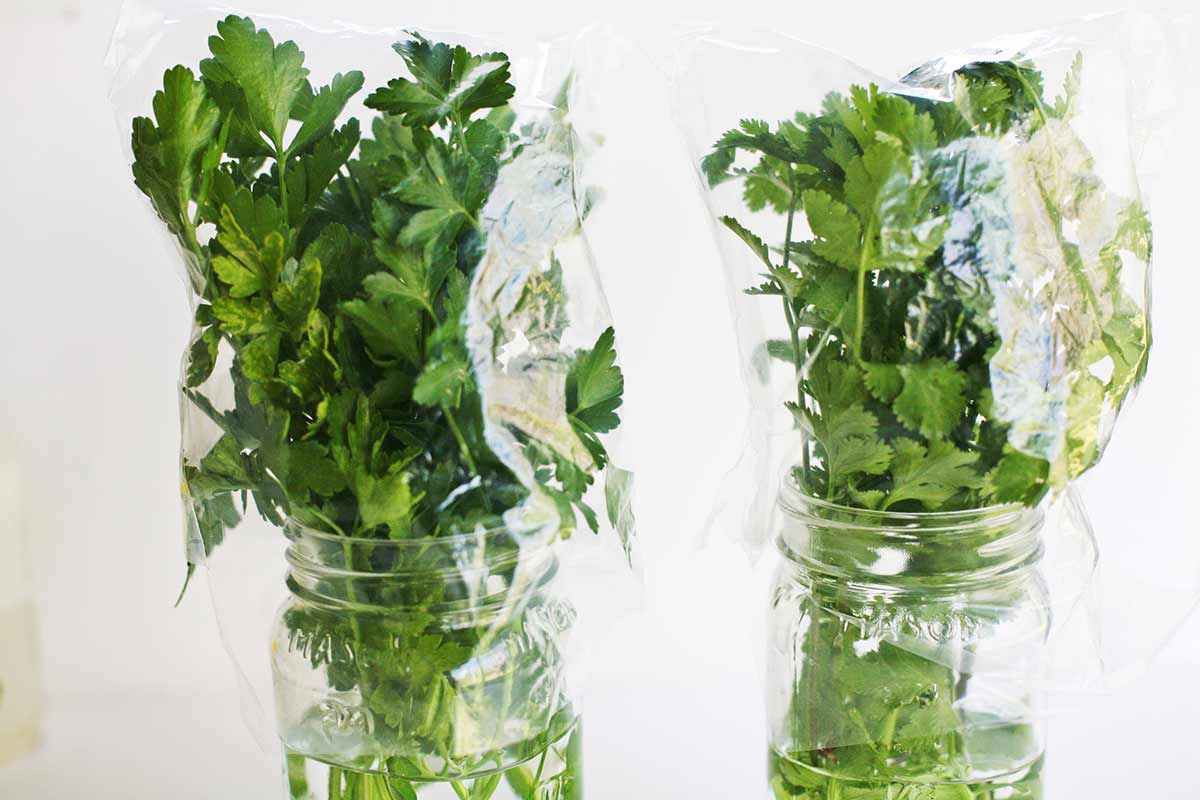


0 thoughts on “How To Store Cashmere Sweaters”